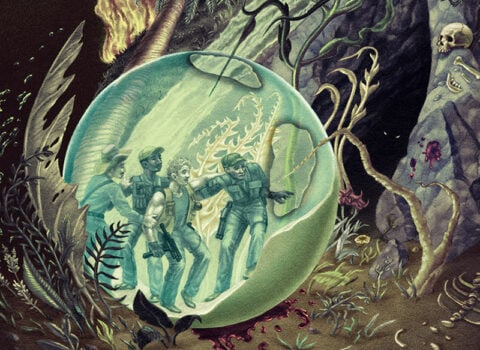Recently, a friend received a novel as a gift. “You must read this book!” the giver said. My friend read the book. Her report to me: Wow, what a bad book.
We talked about the book, my friend and I. She summarized the plot: told in the third person from the point of view of a young boy during World War II, the novel explores a child’s friendship with another child. The first child, Bruno, is German; the second, Shmuel, is Jewish. Their friendship takes place across a barbed-wire fence, Bruno on the outside, Shmuel on the inside. Bruno wonders why Shmuel–and all the people on his side of the fence–wear “striped pajamas.” Bruno, we come to understand, is a Nazi commandant’s son. They live next to where he works: Auschwitz, whereto Shmuel and his family have been interned.
Following the coincidence of several elements–a case of lice that gets Bruno’s head shaved; a death-camp fence that a child can lift at the bottom and squeeze beneath; an extra pair of “pajamas” that Bruno can wear–Bruno sneaks into the camp so that he and his now deeply cherished friend can play together without the fence between them. Into the camp sneaks Bruno in “pajamas,” and quickly he and Shmuel are caught, and marched off together to a gas chamber. Bruno, unaware that they’re in danger, dies cheerily holding his best friend’s hand. Soon after, Bruno’s father, the Nazi commandant, looks for, but cannot find, his son. And then he discovers the clothes that Bruno abandoned when donning the extra set of “pajamas”, and understands what must have happened.
I cannot and will not judge a book I have not read. What I can say, and what my friend and I did discuss, is the nature of this novel’s animating idea. The general idea behind the book was to find a new way to tell the story of one of the most significant horrors of the Second World War and of recorded history, but through the eyes of a child. Naturally, that idea is nothing new, as readers of The Tin Drum know. What is new, though, is how this particular author shaped this particular story, and what that shape means. In the guise of telling, anew, the story of the liquidation of 6,000,000 Jews by the Nazis, the author tells the story of how an innocent German child–a high-level Nazi’s son–is mistaken for a Jewish child and pays the ultimate price for that mistake.
The book is called The Boy in the Striped Pajamas, by an Irishman named John Boyne. Interestingly, and after our discussion, my friend and I discovered, via the Google, that this 200 page novel is not meant for adult readers. Rather, it is a young-adult novel for readers eleven and up. Setting aside as unimportant (and unknown) why my friend’s friend, an adult, said that my friend, also an adult, “must read this book!”, I will say is this:
The animating idea of such a book, whether for children or adults, is morally objectionable. To account with the death of 6,000,000 innocents, the author invents a fictional “innocent” whose ironic fate is meant to offer a poignant window onto actual mass murder. Why morally objectionable? It is not that I object to fictionalization of the factual. Rather, I object to the notion that the fake death of a fake German child–through a series of contrivances that guarantee his irony-drenched death–is put forward as a representative means for readers to empathize anew with real children and real adults who really died. How else, such a narrative strategy suggests, could one empathize with the gruesome abstraction 6,000,000 innocents but by the creation of an ironical “innocent”?
Here we see the limits of irony as a narrative strategy. ‘Irony’ comes from the Greek eir?neia meaning “simulated ignorance.” When irony gets used indiscriminately, you get stories that exhibit not simulated ignorance but actual ignorance. Wow, the child or adult in the aftermath of such a story is supposed to say, how ironic that an “innocent” German child gets mistaken for one of the “vermin” his father is working to kill. Mass murder, which demands that we look at it face on, gets ironized into the opposite of mass-murder: murder by mistake.
That the novel in question might justify such sleight of hand as a means by which a child might first imagine the unimaginable is exemplary of the most condescending and corrupt ideas of what fiction is. Fiction is not meant to make difficult facts less disturbing. Rather, as David Foster Wallace said in an interview, fiction is more properly meant to “comfort the disturbed and disturb the comfortable.” An idea like the one that animates Boyne’s novel can only comfort the comfortable.
The Boy in the Striped Pajamas has sold 3 million copies worldwide and will soon be a Miramax movie, just in time for Thanksgiving.





